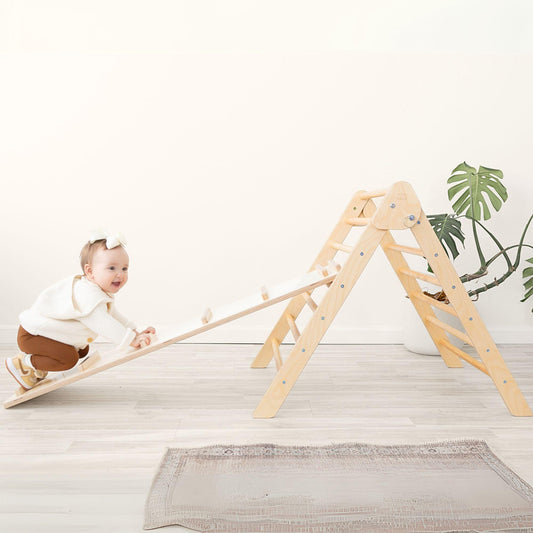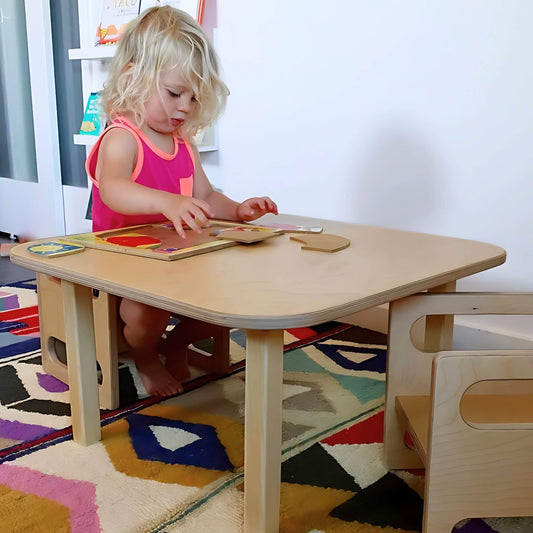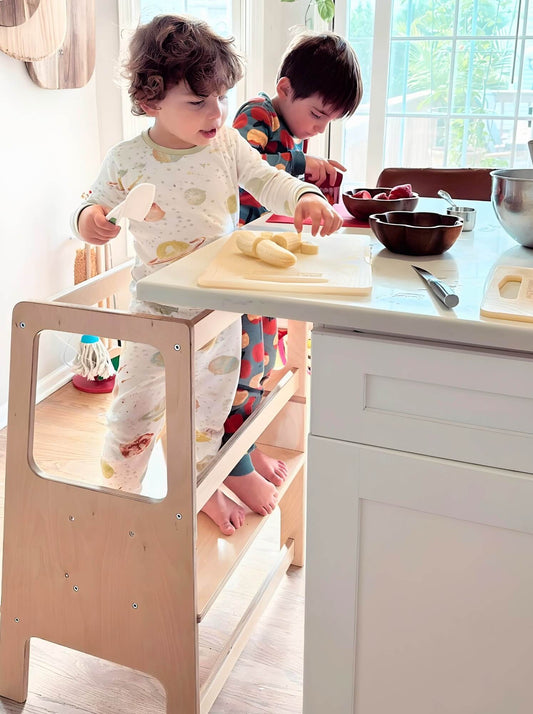
Movement Is Learning: Embrace Active Bodies and Minds
Share
When you watch a young child, it becomes clear: movement is at the heart of how they explore, process, and grow. They learn by touching, climbing, carrying, and repeating—even the smallest motions are packed with purpose. It was this observation of children's natural tendencies that led Dr. Maria Montessori to one of her most powerful insights: movement isn’t separate from learning—it is learning.
“Watching a child makes it obvious that the development of his mind comes through his movements.”
— Maria Montessori, The Absorbent Mind
The Connection Between Movement and Learning

Montessori’s insights have since been validated by research in neuroscience and developmental psychology. Movement is essential for more than just physical development—it builds memory, focus, and emotional regulation. Every time a child engages with their environment through motion, they are building and reinforcing neural connections that lay the groundwork for cognitive growth.
Studies support this link. Sensorimotor activities enhance working memory, attention, and even language skills (Adolph & Hoch, 2019; Harvard Center on the Developing Child). Movement is not a break from learning—it’s how young children come to understand the world.
Movement in the Prepared Environment
The Montessori space, known as the “prepared environment,” is intentionally structured to support free, purposeful movement. Whether it be in the home playroom or a classroom, Montessori environments are filled with open space and child-sized materials that children can access and use independently.
You’ll see children:
- Walking freely to choose their work
- Carrying trays, setting tables, and rolling floor mats
- Practicing real-life tasks like sweeping, pouring, or food prep
- Working at floor tables or standing depending on their preference
- Each of these actions strengthens motor coordination, focus, and confidence—and all are part of the curriculum.
Movement as a Path to Concentration
Rather than disrupting learning, movement in a Montessori setting supports deep focus. Children who are free to move in ways that are meaningful to them often enter a "cycle of work"—periods of intense concentration and satisfaction.
Montessori believed that this freedom to move was essential for developing both the intellect and the will. As she wrote in The Absorbent Mind:
“The child needs to move and yet remain concentrated; he needs to act and yet not lose the thread of his activity.”
Intentional movement, she discovered, nurtures self-discipline, independence, and inner calm.

The Role of the Adult
As caretakers for the little learners in our lives, it is our job to observe, prepare the space, and trust the child’s natural drive to learn through movement. By modeling calm, purposeful actions and allowing space for independence, adults support concentration, confidence, and self-direction.
As parents, it can be hard to fully follow every Montessori principle—and that’s okay. You don’t need to be perfect to embrace the heart of the approach. Even in the middle of feeding the dog or joining a Zoom call late (we’ve all been there), small changes can make a big impact.
For example, letting your child carry their own plate to the sink or pour their own water may seem simple, but it’s a powerful form of learning. These everyday movements build coordination, responsibility, and independence—exactly what Montessori envisioned when she said movement is the key to learning.
Supporting Movement-Based Learning at Home
You don’t need a formal Montessori classroom to support this approach. You can begin by observing your child’s natural movements and creating an environment that welcomes them.
Try:
- Offering a low shelf with accessible materials
- Providing real tools for real tasks (child-safe knives, cleaning supplies, etc.)
- Creating open space for movement and floor work
- Using child-sized tables and chairs that encourages independence
- Facilitating the child's participation in daily tasks, like inviting them to help cook with the help of a Toddler Tower
Most important is to trust your child’s instinct to move and learn—because they’re not separate processes. They are one and the same!

















 Off
Off
